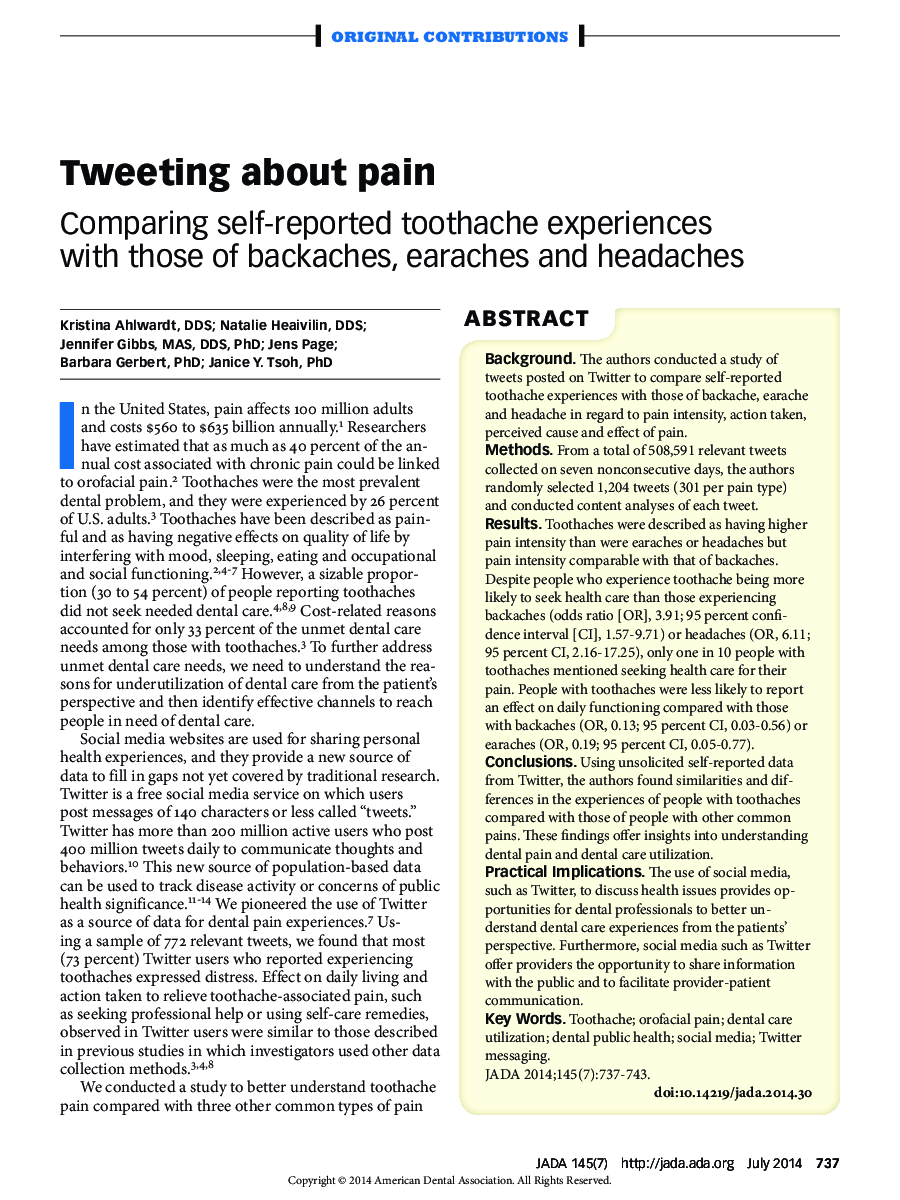| Article ID | Journal | Published Year | Pages | File Type |
|---|---|---|---|---|
| 3137008 | The Journal of the American Dental Association | 2014 | 7 Pages |
ABSTRACTBackgroundThe authors conducted a study of tweets posted on Twitter to compare self-reported toothache experiences with those of backache, earache and headache in regard to pain intensity, action taken, perceived cause and effect of pain.MethodsFrom a total of 508,591 relevant tweets collected on seven nonconsecutive days, the authors randomly selected 1,204 tweets (301 per pain type) and conducted content analyses of each tweet.ResultsToothaches were described as having higher pain intensity than were earaches or headaches but pain intensity comparable with that of backaches. Despite people who experience toothache being more likely to seek health care than those experiencing backaches (odds ratio [OR], 3.91; 95 percent confidence interval [CI], 1.57-9.71) or headaches (OR, 6.11; 95 percent CI, 2.16-17.25), only one in 10 people with toothaches mentioned seeking health care for their pain. People with toothaches were less likely to report an effect on daily functioning compared with those with backaches (OR, 0.13; 95 percent CI, 0.03-0.56) or earaches (OR, 0.19; 95 percent CI, 0.05-0.77).ConclusionsUsing unsolicited self-reported data from Twitter, the authors found similarities and differences in the experiences of people with toothaches compared with those of people with other common pains. These findings offer insights into understanding dental pain and dental care utilization.Practical ImplicationsThe use of social media, such as Twitter, to discuss health issues provides opportunities for dental professionals to better understand dental care experiences from the patients’ perspective. Furthermore, social media such as Twitter offer providers the opportunity to share information with the public and to facilitate provider-patient communication.
